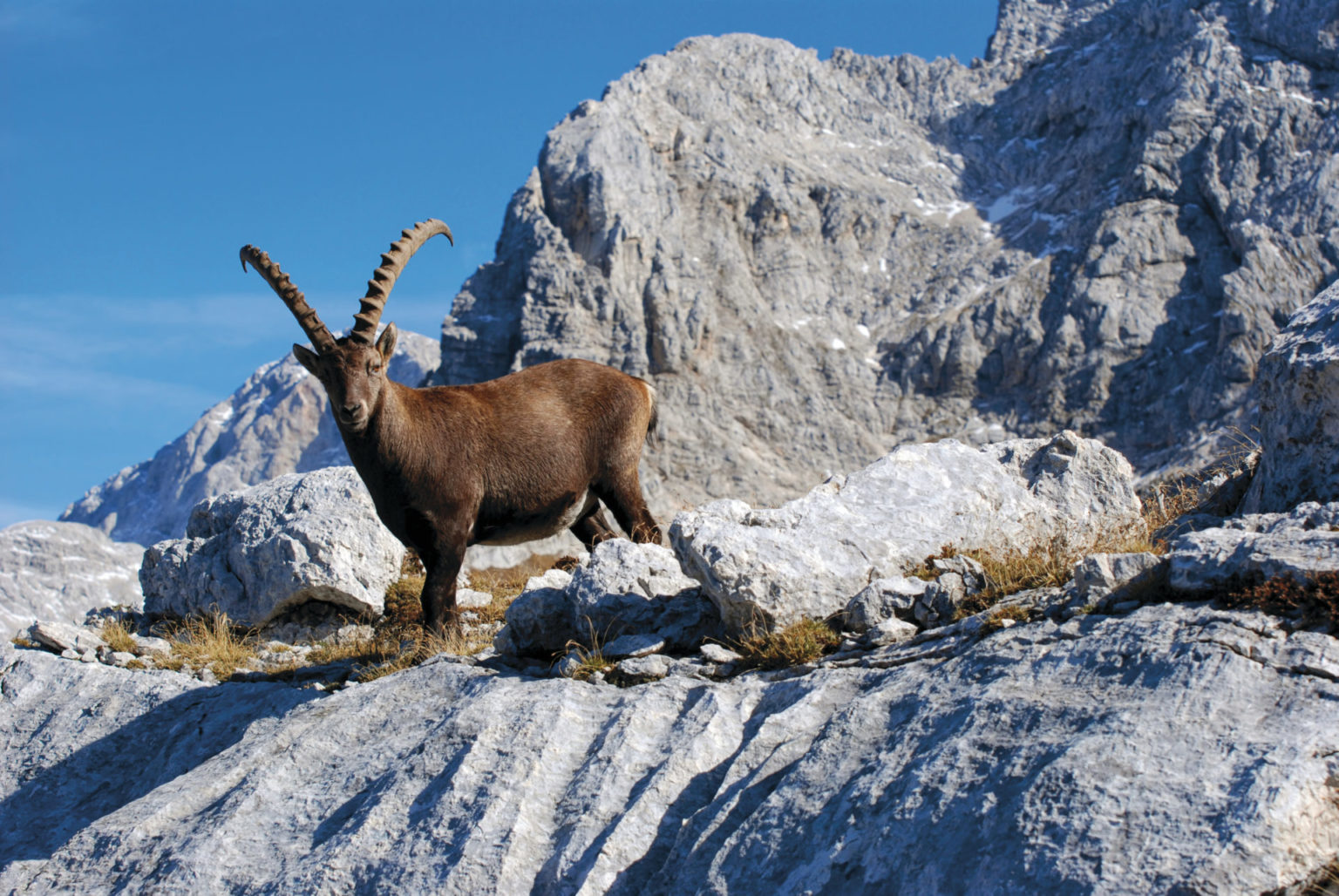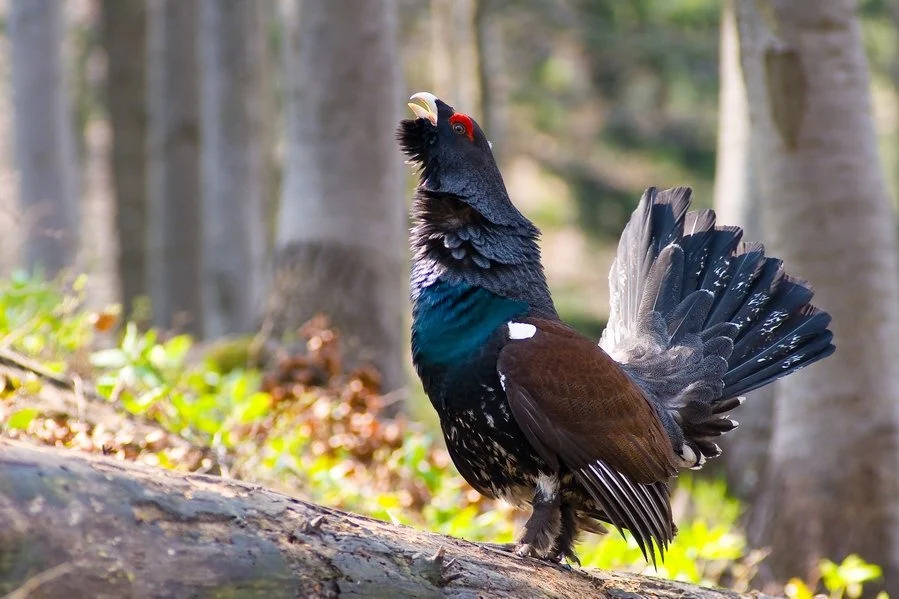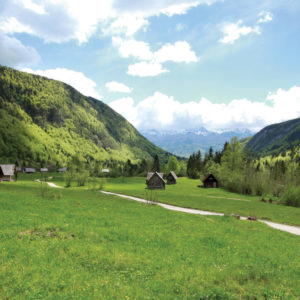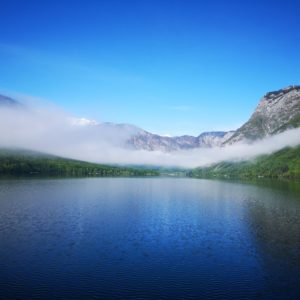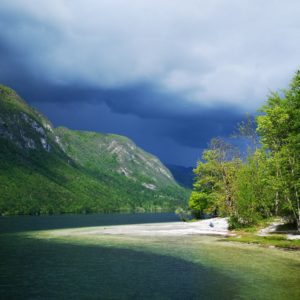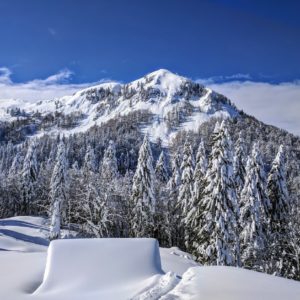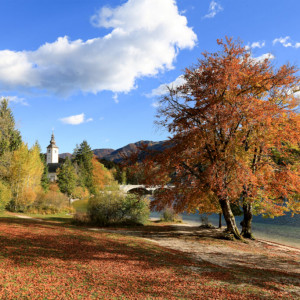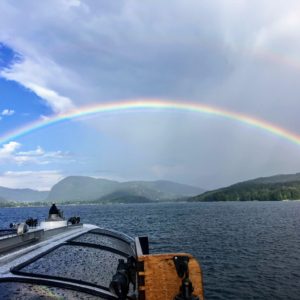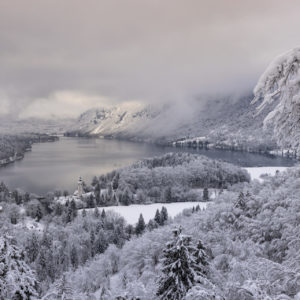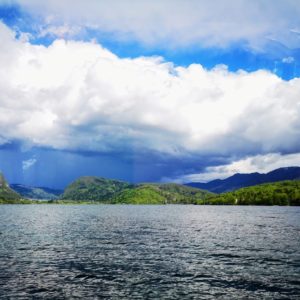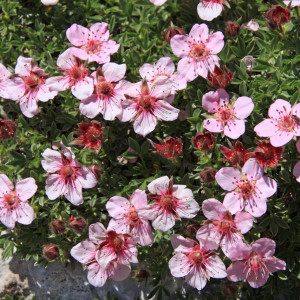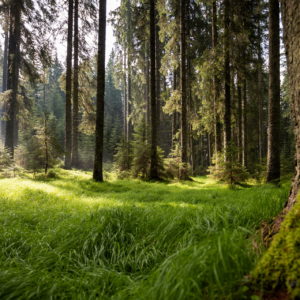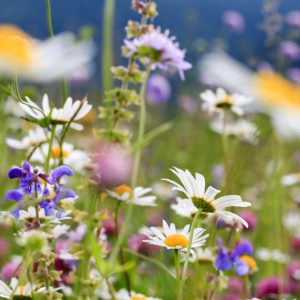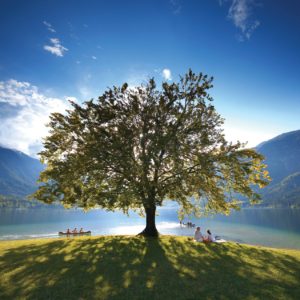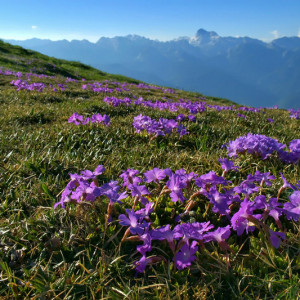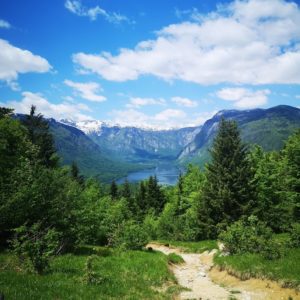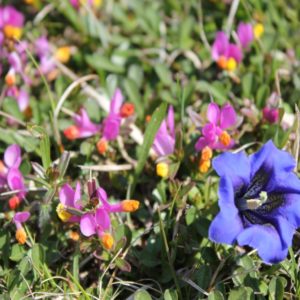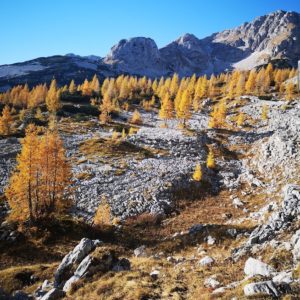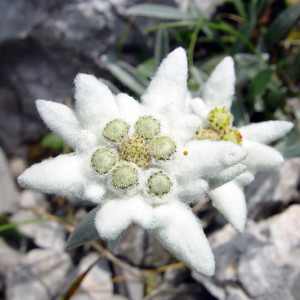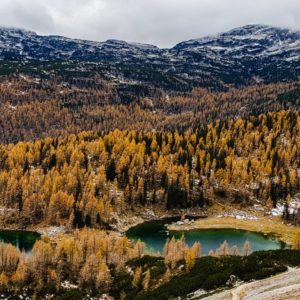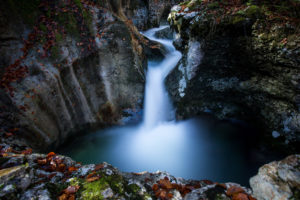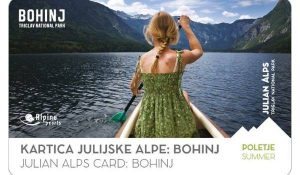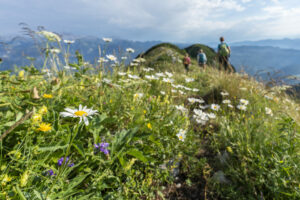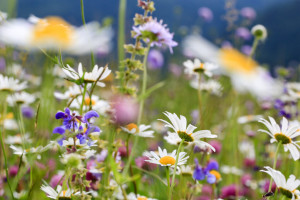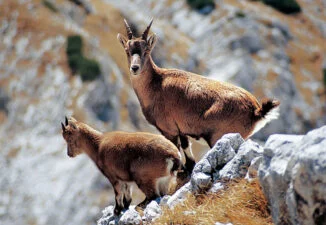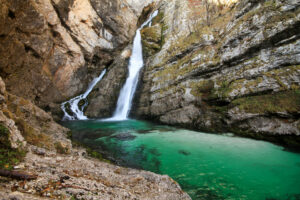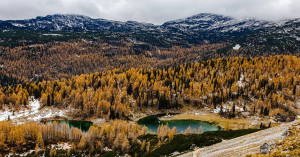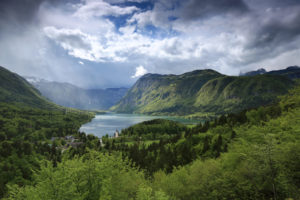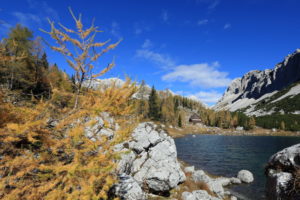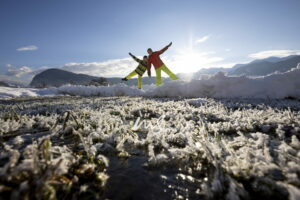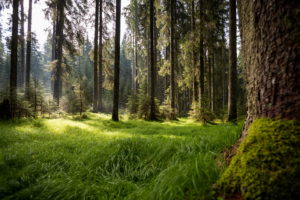It is nature and the love of nature that lead us out of the cities and off the roads and onto the footpaths, into the hills, onto our bikes and into the non-invasive presence of experiencing peace. There we have an extraordinary variety of colours, smells, sensations in just a few steps, hiking or cycling trails. This is Bohinj.
Climate in Bohinj
The Bohinj area has a mountain climate type, with the average temperature in the coldest month below -3°C. The valley part of the area is characterised by a lower mountain climate, while the higher parts are characterised by a higher mountain climate. The area is one of the wettest parts of Slovenia due to its mountainous surroundings. The rainfall regime is sub-Mediterranean, with a primary peak in autumn and a secondary peak in late spring, early summer. The primary minimum is in winter or in early spring, and secondary in summer. Precipitation is characterised by a quantitative distribution. From the south-western and western ridges, the volume changes or decreases rapidly downstream. The first snow can fall as early as October, and the snow cover lasts up to 100 days in the valley area (in Ukanc and Stara Fužina).
The mean annual temperature for the valley station in Stara Fužina is 9.2°C, for Vogel 5.4°C and for Kredarica -1.8°C. The warmest month in both the valley and the mountains is July, while the coldest month in the valley is January and the coldest month in the mountains is February. The high plateau of Pokljuka is characterised by frost heaves, where the air in local basins becomes extremely cold. Due to the topography, temperature inversions are common in the Bohinj area, resulting in extremely low temperatures. If the cold basin air can’t escape, and because it’s sealed in from above, the sun has to warm it up quite a bit for the inversion to dissipate, and with it the fog that usually accompanies it. The height of the inversion layer in Bohinj is between 80 and 150 m above the bottom of the valley. In summer, inversion fogs are short-lived, but by the end of August, fog over the lake can last until 10 a.m. Fog occurs on more than 25% of days of the year, all year round. Komna and Vogel have the highest number of clear days, followed by the high mountain areas, the valley has the lowest number of clear days. The differences in the average number of cloudy days are much smaller, with only the valleys standing out and the mountains being more beautiful. The number of sunny days is highest in Kredarica and lowest in Stara Fužina, mainly due to winter, when there is much more sun in the mountains than in the valley.
The valley is characterised by local, day and night winds in good weather. In spring, lower plateaus are adorned by the slipper orchid, Bohinj iris, Clusius’ gentian… On the slopes, warmer air rises because it is thinner than the surrounding air. At Lake Bohinj, during the summer days in sunny weather, both the valley wind from the east and the south-westerly wind over Podrta Gora alternate. As the slopes cool at night, the air just above them also cools and descends to the valley floor. If the valley is open, the valley wind flows down the valley, but in closed basins it collapses, creating a lake of cold air.
Geomorphological and geological characteristics
Bohinj has been given its present form by the manifold and long-lasting chemical and physical influences on the underlying geology, as well as by internal geological forces – the folding and uplift of the earth’s layers.
The oldest rocks in Bohinj are around 250 million years old. The largest area is covered by carbonate rocks, consisting of limestone, limestone with hornblende and dolomite. Bohinj is home to numerous mineral and fossil deposits. Some of them, especially iron ore (bobovec), were the reason for the first settlements in Bohinj. Geologically, the youngest deposits in Bohinj are the remains left behind by glaciers (glacial valleys), limestone deposits (glacial moraines) and steep gorges. Tectonic subsidence created the Bohinj basin, while faulting created valleys. Pleistocene glaciation gave the area its final form. Traces of the last glaciation, 8,000 years ago (the Bohinj or Bühl stage), are clearly visible.
At the heart of the Julian Alps are high mountain ridges with towering peaks, including our highest peak, Triglav. To the south are the Lower and Upper Bohinj valleys with the Voje valley. The mountains are bordered by the Triglav Lakes Valley, the Lopučniška Valley, the Velska Valley and the Mišeljska Valley. The Julian Alps are the least rugged on the eastern periphery, with the shrubby and forested Pokljuka plateau. Komna is a modest, heavily wooded remnant of the former plain. The eastern part of the municipality extends onto the forested Jelovica plateau. The predominantly rocky terrain is characterised by karst landforms. The calcareous glacial material has been scraped away to form hump-shaped meadows (e.g. at Vogar), which are part of the cultural heritage. The Pršivec contains extensive underground labyrinths. Most known attractions are the abyss Brezno pri Gamsovi glavici in occasional waterfall Govic. All these characteristics make the area very attractive.
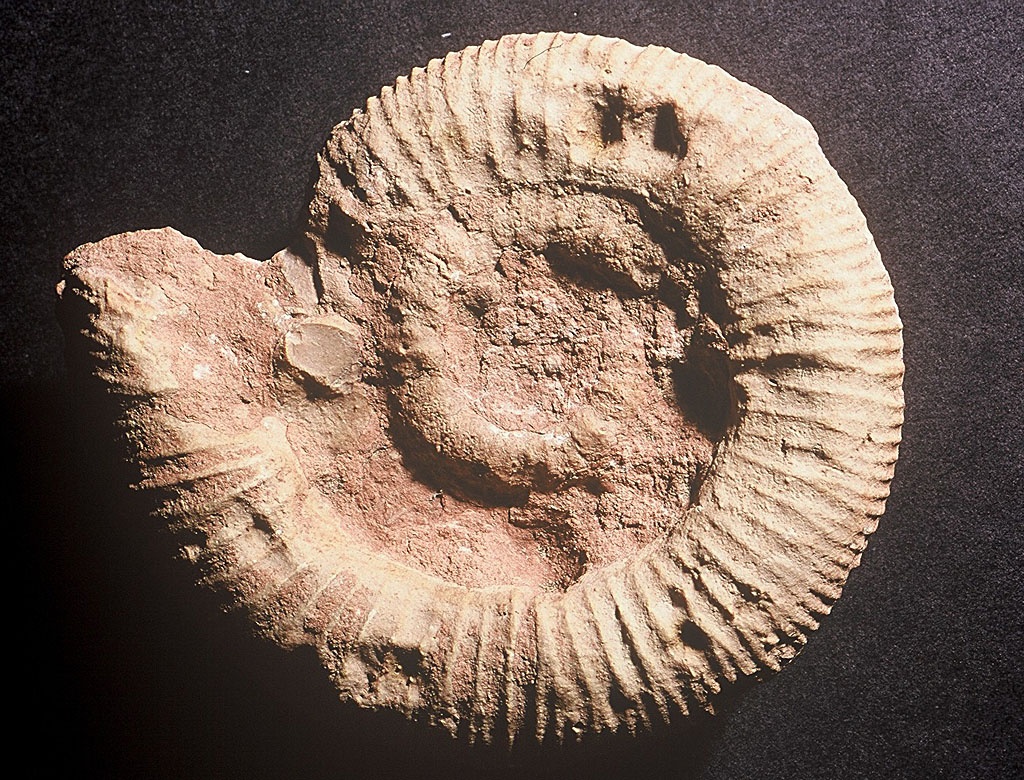
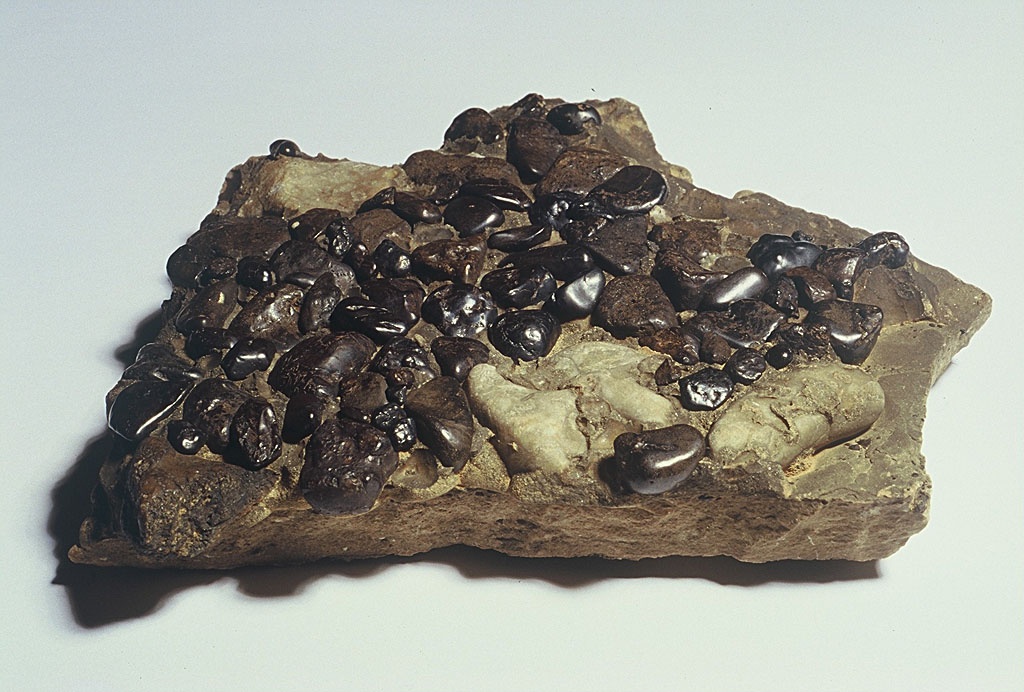
Hydrological characteristics
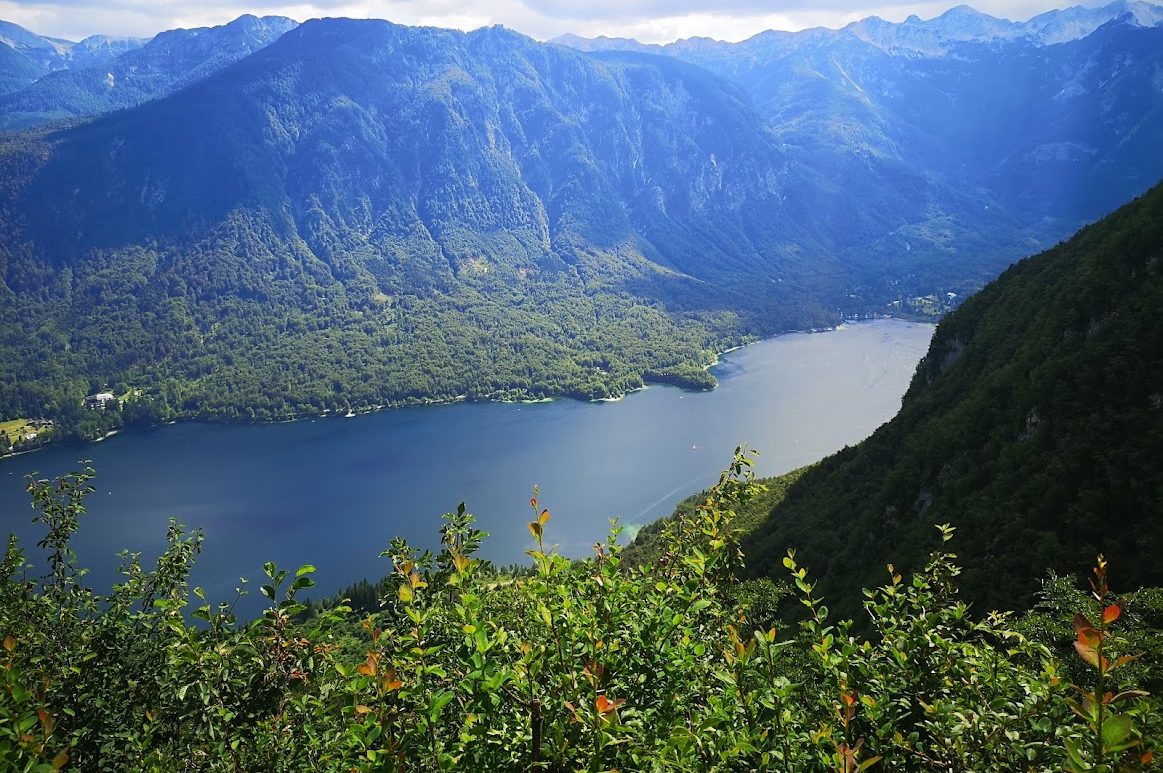
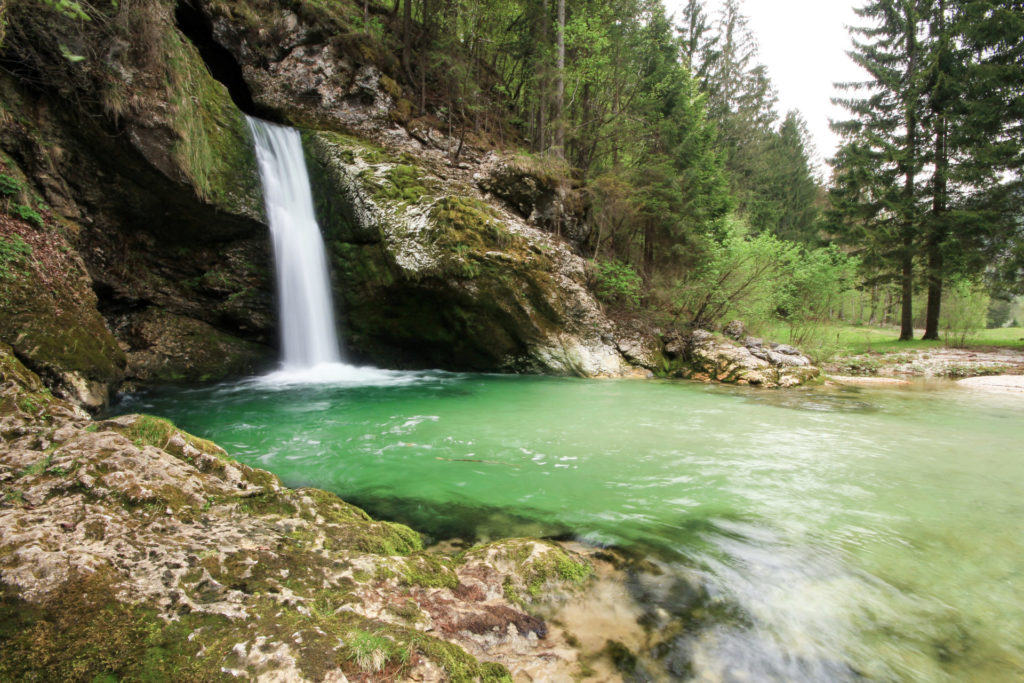
The Bohinj area is rich in surface and groundwater.
The main natural attraction is Lake Bohinj, which is of tectonic-glacial origin. The lake is very flowing, with the Savica river flowing into it and the Jezernica river flowing out of it. The Jezernica is one of Slovenia’s shorter rivers, merging with the Mostnica stream after only a few 100 metres. Together they continue their journey as river Sava Bohinjka.
The Triglav Lakes are the highest lakes in the Bohinj part of the Triglav National Park. There are also the lake on Planina pri Jezeru and the Šijec and Goreljek bogs in Pokljuka belong to the group of standing waters.
The most famous and visited karst spring is the Savica waterfall, which brings water from the lakes in the Triglav Lakes valley. The Govic waterfall in the south face of the Pršivec erupts on a day of heavy rainfall. High in the Suha valley, which plunges into the Vogar plateau, just below the source of the Suha stream, is the largest glacier waterfall in the Julian Alps – Vodice. In the Voje valley, you will find the beautiful Mostnica waterfall. There are two waterfalls on the Ribnica stream above Srednja vas. Other interesting waterfalls to visit are Grmečica, Peračica near Log and the Bistrica spring above Žlan.
The Sava Bohinjka river flows through the valley. It originates as the Savica waterfall, which roars out of the Komarča wall and flows into Lake Bohinj as the Savica river in Ukanc. Under the bridge by the Church of St. John the Baptist flows out of the lake into the sparkling Jezernica, where it is greeted by the Mostnica river after only 100 metres. They flow into the Sava Bohinjka, which is fed by numerous streams such as the Ribnica, Suha, Bistrica, Belca, Jerečica and others.
Soil and flora
The pedological and associated vegetation characteristics are one of the factors that make the Bohinj area so attractive. On the more or less inclined slopes, limestone and dolomite rheniferous soils are represented, interspersed with brown post-carbonate soils. Beech and spruce forests are widespread here, with larch and alpine heath along the forest boundary, which ranges from 1,600 to 1,800 metres high.
The forest covers valley bottoms, steep slopes and high plateaus. Bright forests overgrow the Zgornja Komna and Fužina plateaus, where many mountain pastures have been formed over the years. The upper forest boundary is made up of larch and spruce, which grows heavily in karst hollows. The storm-like forms of trees along the forest boundary are typical especially on the southern slopes of the Bohinj-Tolmin mountain range. Human intervention has changed the tree composition of the Bohinj forests from the original mixed forests around mountains, mines and charcoal pits to predominantly spruce forests. In addition to their economic functions, forests also play a protective, hydrological, climatic, zootopic, recreational, aesthetic and other ecological roles. Lithosols have developed in the highest areas, on peaks, ridges and steep slopes, with alpine willows, a mixture of the sturdy willow with the Triglav honeysuckle, and a mixture of the round-leaved bryophytum with the Julian poppy.
Bohinj’s location and rugged terrain, the difference in altitude, the influence of the Mediterranean Sea and the underlying geology, mean that the 700-2,500 m altitude range is home to a variety of habitats with an extremely diverse alpine limestone flora. In the valley, we can find colourful meadow flora (spring gentian, arnica, bellflowers…) In spring, lower plateaus are adorned by the slipper orchid, Bohinj iris, Clusius’ gentian… The mountains above Stara Fužina are rich in scree flora, which appears above 2000 metres (Potentilla nitida, Eritrichium nanum, Gentiana terglouensis, Crepis Terglouensis…). By the end of June, orchids and the edelweiss also appear. A special place is held by plant species of highland marshes; the marshes developed because of peat moss. Alpine plants have a special role in the fragile Alpine ecosystem. The Bohinj area is home to many endemics. Črna Prst, the valley of the Triglav Lakes and the Pokljuka marshes are particularly famous for their distinctive and varied vegetation. Potentilla nitida and edelweiss – Leontopodium alpinum carry the most remarkable story of all.
Lake Bohinj is home to 65 species of algae.
Wildlife in Bohinj
The diversity of animal species in the Bohinj area is due to the high altitude difference, the influence of the Mediterranean Sea and the geological setting.
The lower animal groups are very species-rich, with many endemic species. Among the vertebrates, the golden eagle (Aquila crisaetos), the grouse (Tetrao tetrix), the white-tailed eagle (Lagopus mutus) and occasionally the white-headed vulture (Gyps fulvus) are particularly well known.
Among the game species, the most characteristic and abundant are the chamois (Rupivapra rupicapra) and the ibex (Capra ibex). The extensive forests provide habitat for the wild cat (Felis sylvestris), and occasionally also for the brown bear (Ursus arctos), Western capercaillie (Tetrao urogallus), the Hazel grouse (Tetrastes bonasia) and the Boreal owl (Aegolius funereus).
The endemic Triglav brown butterfly (Erebia pluto) is also a special species.
In recent decades, some long-extinct animals have been introduced: ibex, marmot and mouflon.
The most typical of the larger animals are the lynx, the wild cat and the brown bear, which are very rare in Bohinj. Mammals of note include the marten and the mountain hare.
Bohinj is home to over 80 species of birds.
The most famous snakes are the nose-horned viper and the viper.
Lake Bohinj is home to 8 species of molluscs and several species of fish, 5 of which are particularly important (lake trout (Salmo trutta), eelpout (Lota lota), chub (Leuciscus cephalus), meanow (Phoxinus phoxinus), charr (Salvelinus alpinus). Indigenous fish include brown trout, grayling and eelpout.
